While snake charmers in India have long marveled at their allure, you may be surprised to learn about the real-life superpowers that these slithery creatures possess. From regenerating lost skin to scaling trees with uncanny precision, snakes are truly nature’s marvels.
1. The Flying Snake
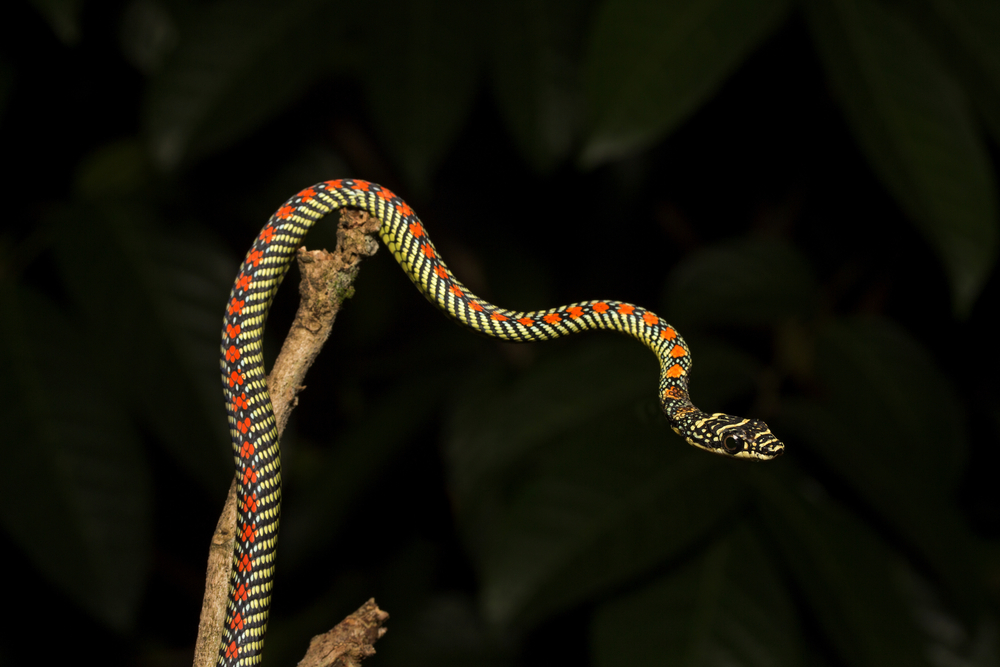
When you think of snakes, you probably envision them slithering across the ground, but the flying snake defies this expectation. With an extraordinary ability to glide through the air, these snakes launch themselves from tree branches and can cover distances up to 100 feet. According to a study published in Nature, their unique mode of locomotion involves flattening their bodies to create a parachute-like shape, allowing them to glide gracefully through the forest canopy. This aerodynamic feat not only helps them escape predators but also assists in hunting unwary prey. So, the next time you gaze up at the trees, remember that not all snakes are confined to the forest floor.
Flying snakes are native to the rainforests of Southeast Asia, where their aerial displays are a common spectacle. Their vibrant coloring, ranging from neon green to striking yellow, adds to their allure, making them both beautiful and efficient predators. As incredible as their gliding ability is, it’s equally important for their survival in dense forest habitats. Scientists continue to study these snakes to better understand the mechanics of their flight and its evolutionary advantages. It’s a perfect example of nature’s ingenuity, reminding us that the animal kingdom is full of surprises.
2. The Spitting Cobra
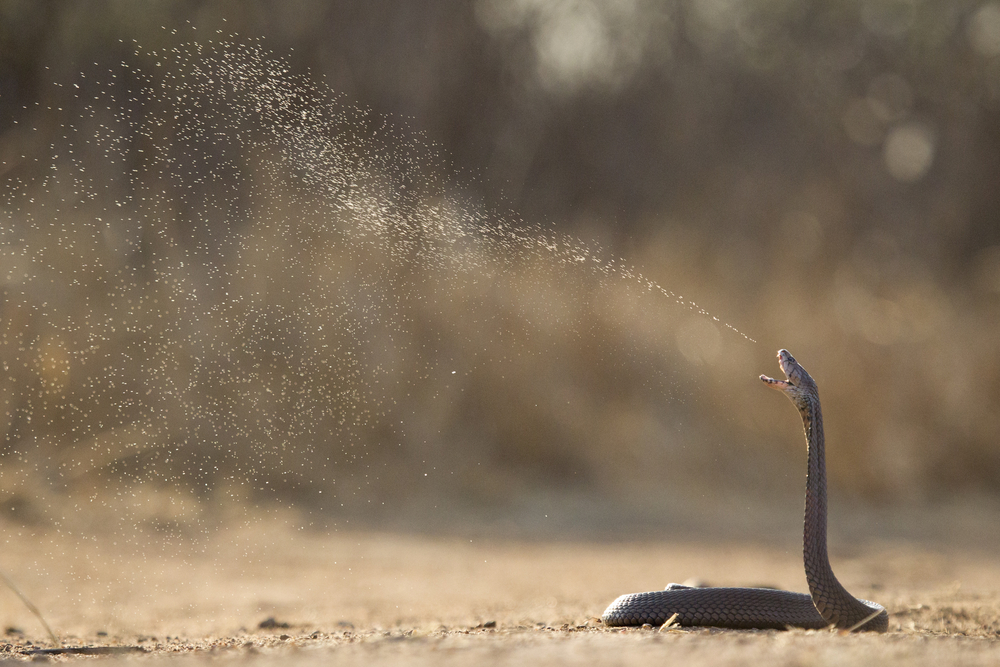
Forget everything you thought you knew about cobras—spitting cobras take defense mechanisms to a whole new level. Instead of relying solely on their venomous bite, these snakes can eject venom from their fangs with astonishing accuracy. They aim for the eyes of a threat, causing severe pain and potential blindness, a tactic that effectively deters predators. This powerful defense mechanism is as fascinating as it is fearsome, showcasing the remarkable adaptations in the snake world. If you’re ever in the vicinity of a spitting cobra, it’s wise to keep your distance and avoid provoking it.
Spitting cobras are found across Africa and parts of Asia, where they have adapted to a variety of environments. Their venom isn’t just for defense—it also plays a crucial role in subduing prey, making them formidable hunters. Despite their fearsome reputation, these snakes are an essential part of their ecosystems, helping to control rodent populations. Conservation efforts are underway to protect their habitats, ensuring that spitting cobras continue to thrive in the wild. Their existence is a reminder of the delicate balance between predator and prey in nature.
3. The Hognose Snake
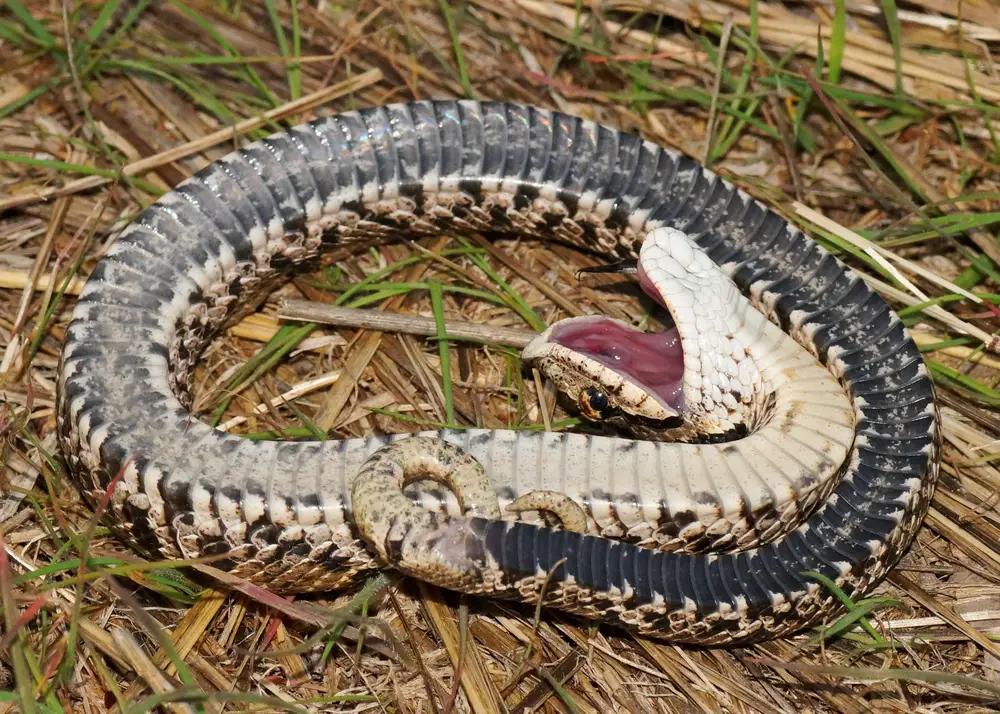
The hognose snake is truly the drama queen of the serpent world, and it’s all about the theatrics. When threatened, this snake goes into full performance mode, puffing up its body and flattening its head to mimic a cobra. If that doesn’t work, it puts on an Oscar-worthy act by playing dead, often rolling onto its back and letting its tongue loll out. According to National Geographic, this behavior is not just for show; it’s an effective strategy to avoid predation, as many animals prefer live prey over what appears to be a carcass. While it might seem comical to us, this act is a testament to the hognose snake’s survival instincts.
Hognose snakes are harmless to people and are often kept as pets due to their docile nature and entertaining antics. Their upturned snouts give them a distinctive appearance, and they come in a variety of colors, from earth tones to vibrant oranges. In the wild, they primarily feed on amphibians, using their keen sense of smell to track down hidden prey. Their unique behaviors and charming looks make them a favorite among reptile enthusiasts. It just goes to show that sometimes the best way to survive is with a little flair.
4. The Rattlesnake
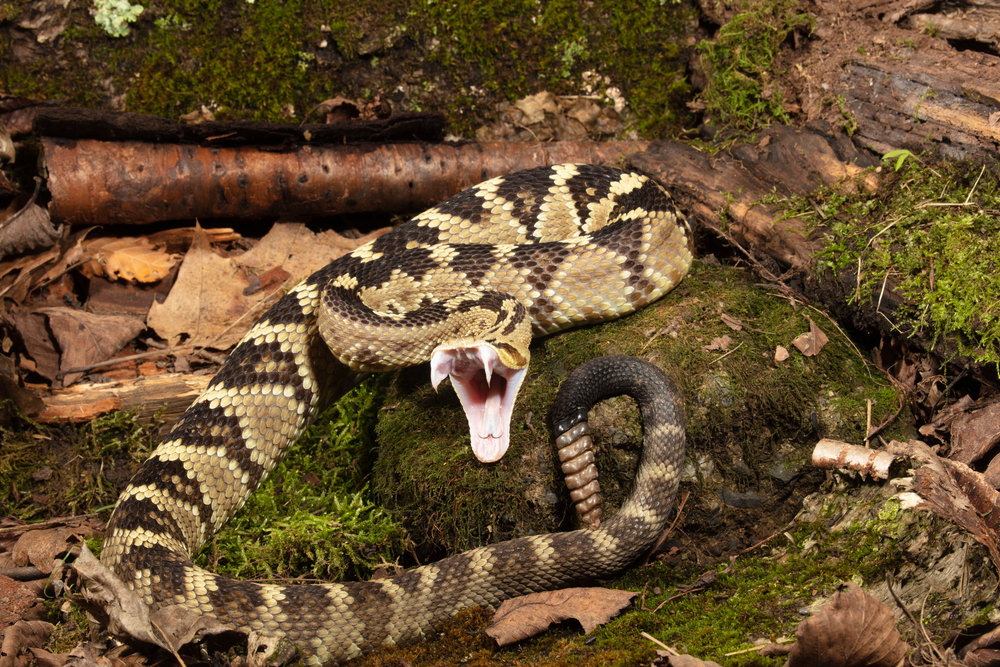
Rattlesnakes are perhaps the most iconic serpents in North America, known for their signature sound as much as their potent venom. But what you may not know is that their rattles are a marvel of evolutionary engineering. Composed of interlocking segments made of keratin, the rattle can vibrate up to 60 times per second to produce its distinctive warning buzz. This sound serves as an effective deterrent to potential threats, signaling the snake’s presence before a conflict arises. In essence, the rattlesnake’s rattle is nature’s equivalent of a car alarm, warning you to steer clear.
Beyond their rattles, these snakes have specialized heat-sensing pits located between their eyes and nostrils. These pits allow them to detect the body heat of their prey, making them incredibly effective hunters, even in the dark. Rattlesnakes play a vital role in controlling rodent populations, which makes them important contributors to their ecosystems. Though often misunderstood and feared, these snakes deserve recognition for their incredible adaptations and ecological value. When you hear that rattle, remember it’s a natural wonder, not just a cause for alarm.
5. The King Cobra
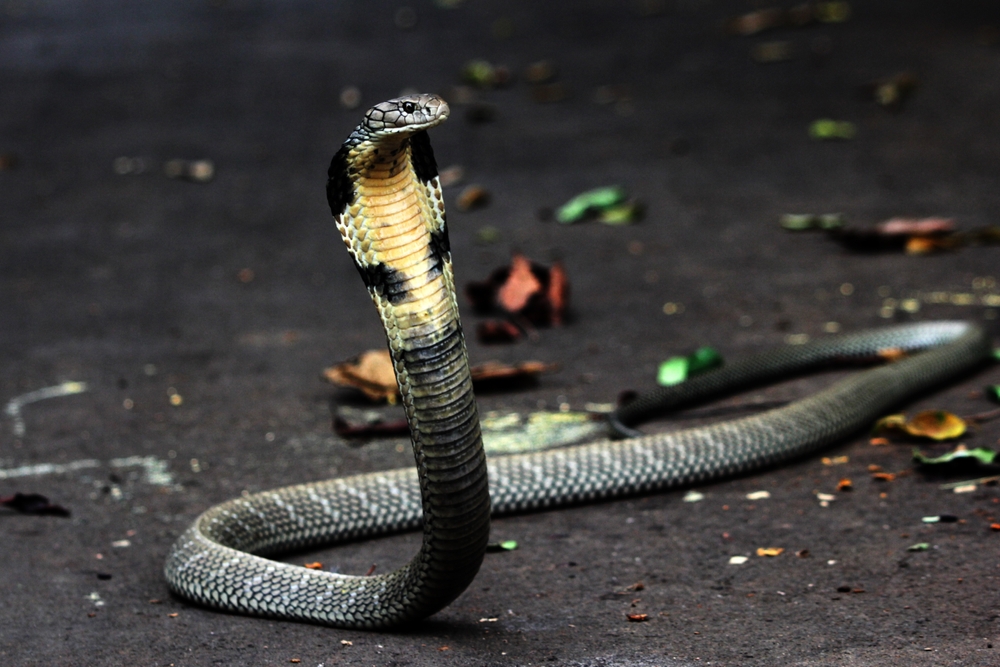
The king cobra is the world’s longest venomous snake, reaching lengths of up to 18 feet, but size isn’t its only impressive trait. This regal serpent possesses a level of intelligence that sets it apart from other reptiles, even displaying complex behaviors like nest building. According to a study in the journal “Animal Behavior,” king cobras demonstrate problem-solving skills and spatial awareness, suggesting a higher level of cognitive function than previously thought. This cognitive ability enables them to navigate their environments with remarkable precision, whether they’re hunting prey or evading threats. If snakes had royalty, the king cobra would undoubtedly wear the crown.
King cobras inhabit the forests and jungles of Southeast Asia, where they primarily feed on other snakes, making them apex predators in their habitats. Their neurotoxic venom is potent enough to bring down larger animals, and though dangerous, they usually avoid human interactions. Conservation efforts are crucial as habitat destruction threatens their populations, highlighting the need to balance human development with wildlife preservation. Observing a king cobra in the wild is both awe-inspiring and humbling, a reminder of the intricate web of life on our planet. Their intelligence and majesty make them a fascinating subject of study and admiration.
6. The Water Moccasin
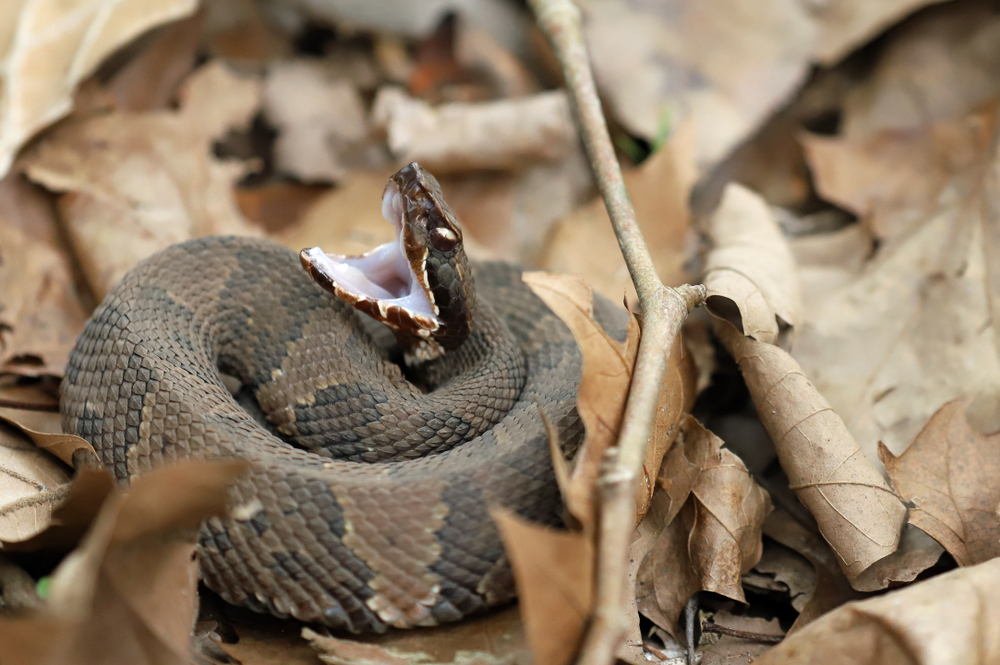
Also known as the cottonmouth, the water moccasin is a semi-aquatic snake with a reputation that matches its formidable appearance. Found in the swamps and wetlands of the southeastern United States, these snakes are excellent swimmers and can often be seen gliding across the water’s surface. When threatened, they open their mouths wide to reveal a frightening white interior, a tactic that serves as both a warning and a defense mechanism. Their venom is potent, capable of causing serious harm to potential predators, but water moccasins typically prefer to avoid confrontation altogether. These snakes are a testament to the diverse and often misunderstood wildlife found in America’s wetlands.
Despite their menacing appearance, water moccasins play a crucial role in their ecosystems by keeping fish and amphibian populations in check. They are opportunistic feeders, consuming a variety of prey, from fish to small mammals, depending on availability. Unfortunately, their habitats are increasingly threatened by human activities such as development and pollution. Efforts to preserve wetland environments are vital for the survival of water moccasins and countless other species. It’s a reminder that preserving biodiversity is essential for maintaining the health of our planet.
7. The Green Tree Python
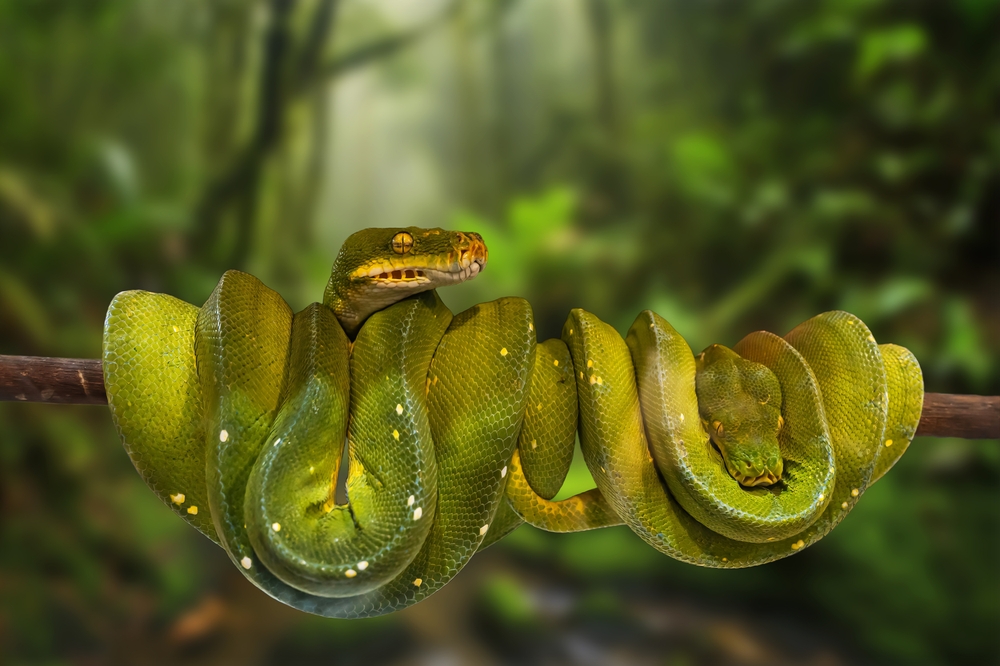
The green tree python is a vision of elegance, with its stunning emerald hue and graceful arboreal lifestyle. Found in the rainforests of New Guinea and northern Australia, these snakes are masters of camouflage, blending seamlessly into the lush foliage. A fascinating study in the Journal of Evolutionary Biology reveals that the vibrant coloration of these pythons is not just for show; it serves as effective camouflage in their leafy habitats, aiding in both predation and protection from predators. This adaptation underscores the intricate ways in which species evolve to survive in their environments. Observing a green tree python in its natural habitat is like witnessing a living work of art.
These snakes have a slow and deliberate hunting style, relying on stealth and patience to capture their prey. They primarily feed on small mammals and birds, using their strong, prehensile tails to anchor themselves in trees while they strike. Their beauty and unique adaptations have made them popular in the exotic pet trade, though it’s essential to ensure ethical and sustainable practices when keeping these reptiles. Conservation efforts are crucial for protecting their rainforest homes from deforestation and human encroachment. The green tree python’s elegance and adaptability make it a symbol of the wonders of the natural world.
8. The Anaconda
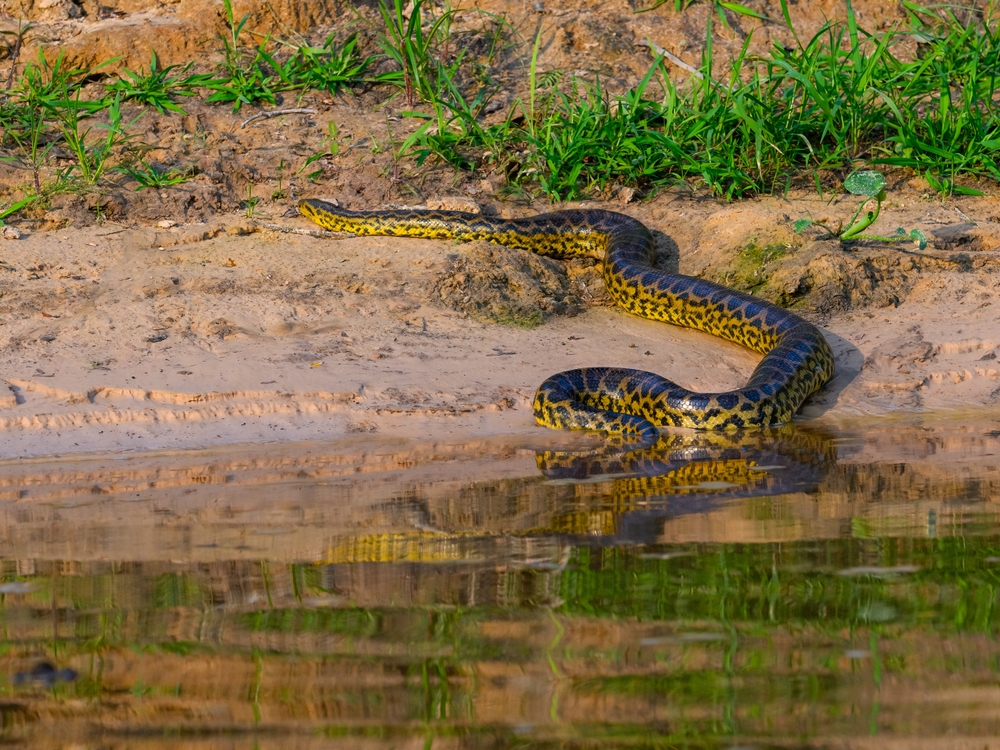
Anacondas are the stuff of legend, often depicted as fearsome giants in countless tales and movies. Found in the swamps and rivers of South America, these snakes are known for their immense size, with some reaching lengths of over 25 feet. Despite their intimidating reputation, anacondas are primarily solitary creatures that spend much of their time in water, where their camouflage helps them ambush prey. Unlike many other snakes, anacondas are constrictors, using their powerful muscles to subdue prey rather than relying on venom. This makes them unique among large predators, and their ability to take down sizable animals is truly remarkable.
Anacondas play a vital role in their ecosystems by controlling populations of fish, birds, and mammals. Despite their fearsome image, they generally avoid humans and pose little threat unless provoked. Their habitats are under threat from human activities, including deforestation and water pollution, making conservation efforts crucial. Educating people about the ecological importance of these snakes can help shift perceptions and foster coexistence. The anaconda’s blend of power and mystery continues to captivate the human imagination, making it a symbol of nature’s untamed beauty.
9. The Rainbow Snake
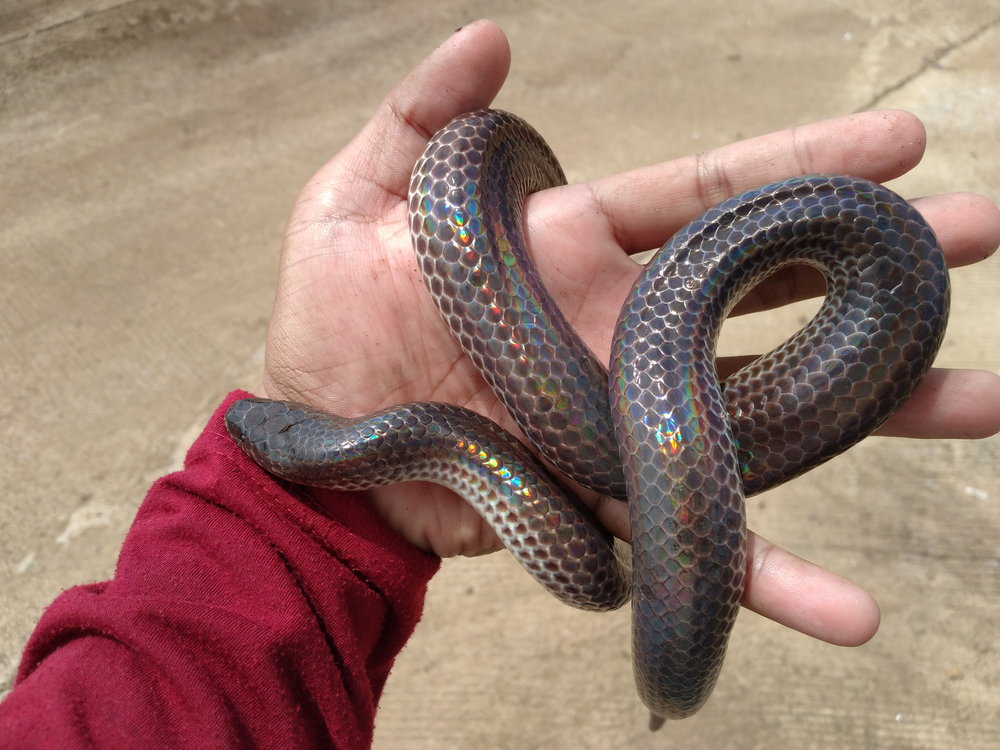
As its name suggests, the rainbow snake is a dazzling creature, known for its iridescent scales that shimmer with every color of the spectrum. Found in the southeastern United States, these snakes are a rare sight, often hiding beneath the leaf litter or in shallow waters. Despite their vibrant appearance, they are non-venomous and pose no threat to humans, making them a true gem of the animal kingdom. Rainbow snakes are excellent swimmers and primarily feed on eels, using their agility and speed to catch slippery prey. Observing a rainbow snake in the wild is a breathtaking experience, a reminder of the beauty hidden in the natural world.
These snakes have a unique reproductive strategy, giving birth to live young, which is uncommon among reptiles. This adaptation may help increase the survival rate of their offspring, as they are born fully developed and ready to fend for themselves. Rainbow snakes play a crucial role in their ecosystems by helping to control fish populations, contributing to the balance of aquatic environments. Unfortunately, they face threats from habitat destruction and pollution, highlighting the need for conservation efforts. Protecting these snakes and their habitats is essential for preserving biodiversity and the health of our planet’s ecosystems.
10. The Black Mamba
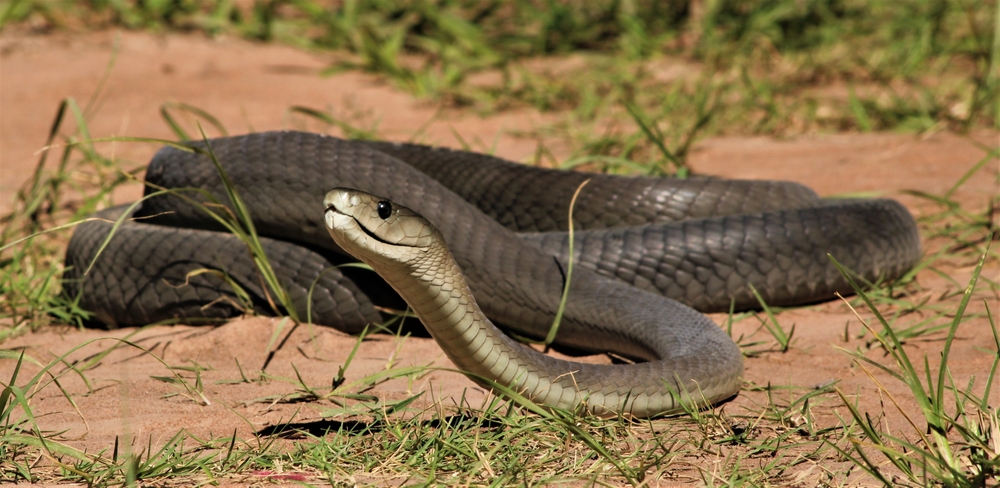
The black mamba is infamous for its speed and lethal bite, often earning them a fearsome reputation. Native to the savannas and rocky hills of southern and eastern Africa, these snakes can reach speeds of up to 12 miles per hour, making them the fastest land snake. Despite their aggressive reputation, black mambas are generally shy and prefer to avoid confrontation unless threatened. Their neurotoxic venom is among the most potent in the snake world, capable of causing death within hours if untreated. While their danger is real, black mambas are also fascinating predators with incredible adaptations.
In the wild, black mambas play a crucial role in controlling populations of rodents and other small animals, maintaining the balance of their ecosystems. Their sleek, slender bodies and quick reflexes make them highly effective hunters, able to strike with precision and speed. Unfortunately, their habitats are increasingly threatened by human activities, such as agriculture and urban development. Conservation efforts are essential to protect these formidable creatures and ensure they continue to thrive in the wild. The black mamba’s mix of danger and elegance makes it a captivating symbol of the African wilderness.
11. The Sidewinder
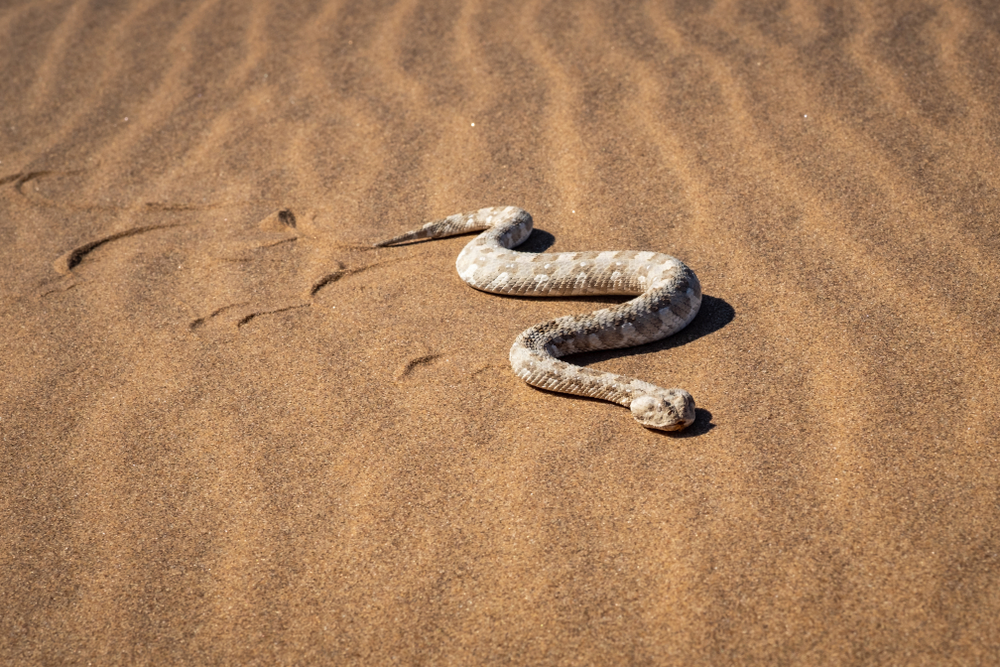
The sidewinder is a master of desert survival, known for its unique form of locomotion that gives it its name. Found in the sandy deserts of North America, these snakes move in a distinctive sideways motion, allowing them to traverse hot sand without overheating. This efficient method of movement has evolved to help them conserve energy and maintain a safe body temperature in harsh environments. Sidewinders are also equipped with specialized heat-sensing pits that enable them to detect prey buried beneath the sand. These adaptations make them a true marvel of evolution, perfectly suited to their arid habitats.
Despite their small size, sidewinders are effective predators, primarily feeding on rodents and lizards. Their venom is potent enough to subdue prey quickly, yet they pose little threat to humans due to their reclusive nature. As desert ecosystems face increasing threats from climate change and human encroachment, protecting sidewinders and their habitats is more important than ever. Understanding and appreciating these unique creatures can help foster a sense of stewardship for the fragile desert environments they call home. The sidewinder’s extraordinary adaptations are a testament to nature’s ability to innovate and thrive even in the most inhospitable conditions.
12. The Sea Snake
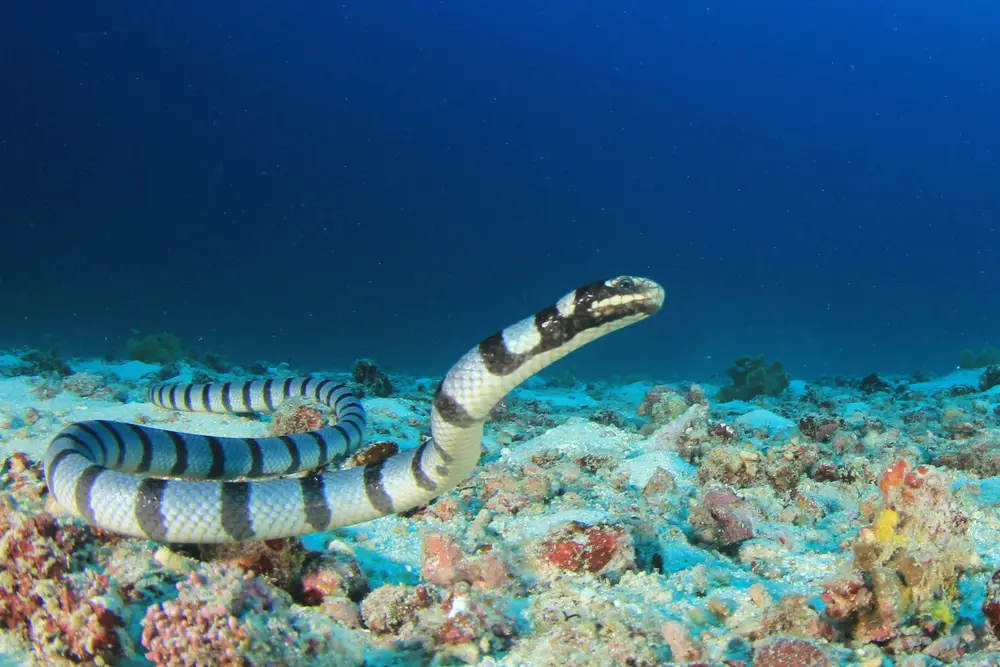
Sea snakes are among the most specialized reptiles, perfectly adapted to life in the ocean. Found primarily in the warm waters of the Indo-Pacific, these snakes have evolved flattened tails for swimming and can hold their breath for up to several hours. Unlike terrestrial snakes, sea snakes have salt glands to expel excess salt from their bodies, a crucial adaptation for surviving in a marine environment. Their potent venom makes them effective hunters, though they typically pose little threat to humans unless provoked. Sea snakes are a fascinating example of how life can adapt to thrive in diverse habitats.
These snakes primarily feed on fish and are known for their ability to dive to significant depths in search of prey. Their presence in marine ecosystems plays a vital role in maintaining the balance of the food web, controlling fish populations and contributing to the health of coral reefs. Unfortunately, sea snakes face threats from habitat destruction, pollution, and climate change, underscoring the need for conservation efforts to protect ocean biodiversity. Educating people about the importance of sea snakes can help shift perceptions and promote coexistence. The sea snake’s unique adaptations make it a symbol of the incredible diversity of life in our oceans.
13. The Bushmaster
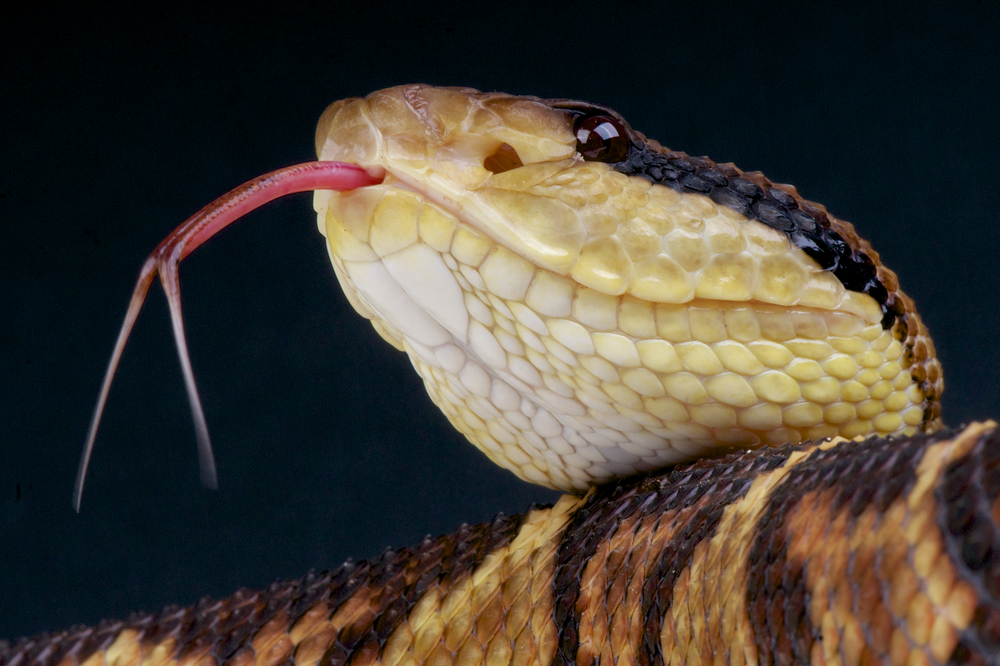
The bushmaster is the largest pit viper in the world, known for its impressive size and potent venom. Native to the forests of Central and South America, these snakes have a fearsome reputation but are rarely encountered due to their reclusive nature. Bushmasters rely on their excellent camouflage to ambush prey, using their heat-sensing pits to detect the body heat of potential victims. Their venom is highly effective, allowing them to subdue larger prey with ease. Despite their intimidating abilities, bushmasters are fascinating creatures with an important role in their ecosystems.
In the wild, bushmasters help control populations of rodents and other small mammals, contributing to the balance of their forest habitats. Despite their reputation, they pose little threat to humans and prefer to avoid confrontation whenever possible. Conservation efforts are crucial as deforestation and habitat destruction threaten their populations, highlighting the need to protect these snakes and their environments. Understanding and appreciating the ecological value of bushmasters can help foster a sense of stewardship for the forests they call home. Their blend of power and stealth makes them a captivating symbol of the tropical wilderness.
14. The Gaboon Viper
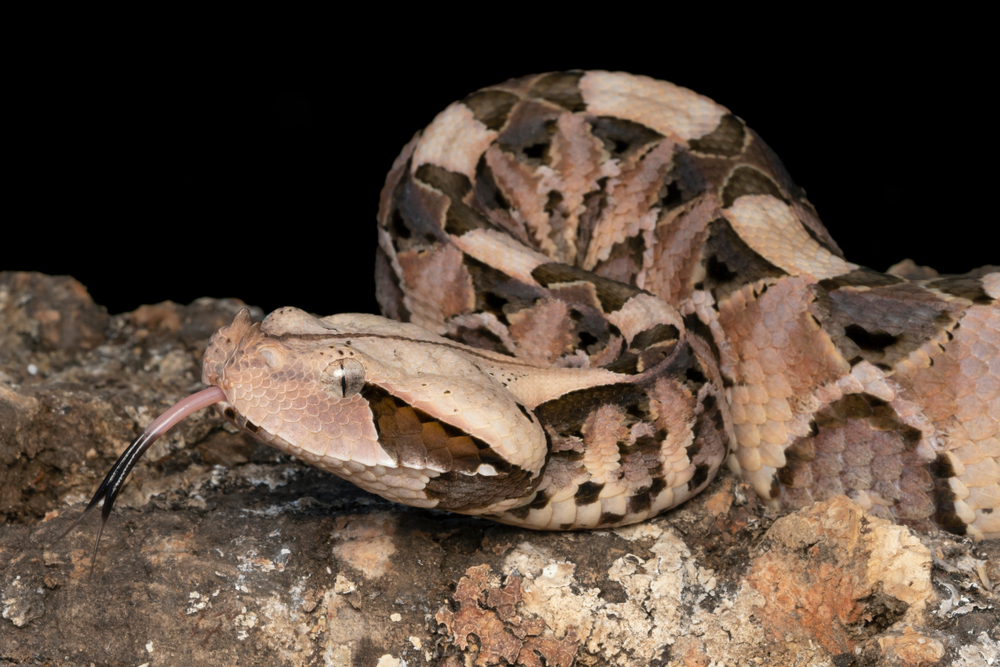
The Gaboon viper is a strikingly beautiful snake, known for its intricate pattern of browns and creams that provide perfect camouflage in the African rainforest. Despite its bulky appearance, this snake is a master of stealth, relying on its ambush tactics to catch prey. The Gaboon viper boasts the longest fangs of any snake, reaching up to two inches, and its venom is a potent mix of hemotoxins that quickly incapacitate its victims. While their bite is dangerous, these vipers are generally docile and prefer to remain hidden from potential threats. They are a remarkable example of nature’s artistry and efficiency.
These snakes play a vital role in their ecosystems by controlling populations of rodents and other small animals, maintaining the balance of the rainforest food web. Unfortunately, their habitats are increasingly threatened by human activities such as logging and agriculture, making conservation efforts essential. Educating people about the importance of protecting these snakes and their environments can help ensure their survival. The Gaboon viper’s blend of beauty and lethality makes it a fascinating subject of study and admiration. Observing one in the wild is a reminder of the intricate and delicate balance of nature.
15. The Coral Snake
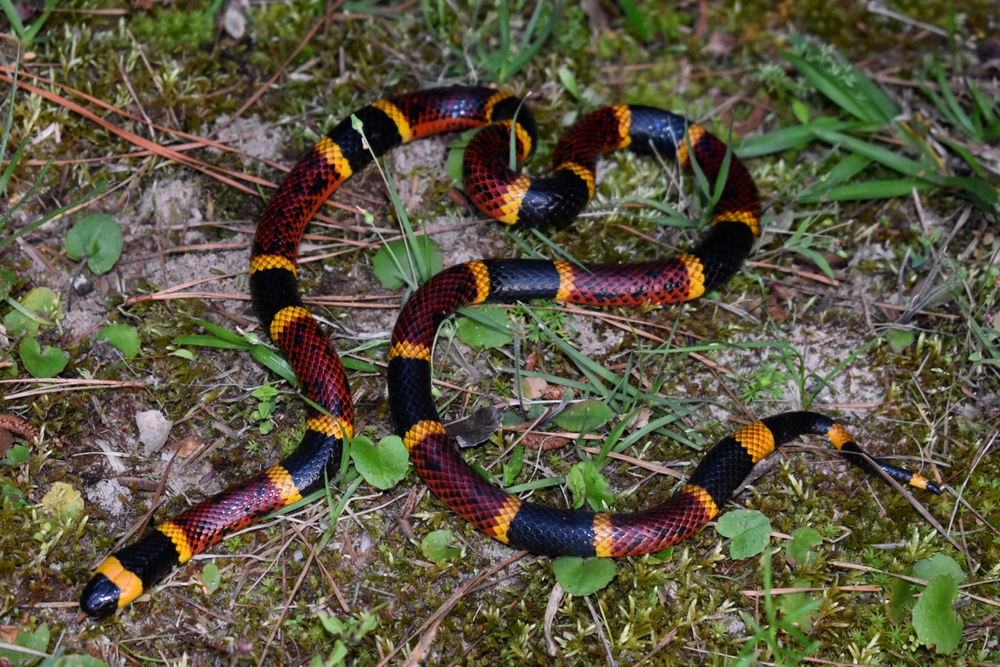
Coral snakes are among the most brightly colored snakes in the world, known for their striking bands of red, yellow, and black. These vibrant patterns serve as a warning to potential predators, signaling the snake’s potent neurotoxic venom. Found in the forests and grasslands of the Americas, coral snakes are elusive creatures that prefer to remain hidden beneath leaf litter or in burrows. Their small size and secretive nature make them difficult to spot, but their presence is an important part of their ecosystems. Coral snakes are a vivid example of how color can be a powerful tool in the animal kingdom.
In the wild, coral snakes primarily feed on other snakes and small reptiles, using their venom to quickly subdue prey. Despite their fearsome reputation, they pose little threat to humans due to their reclusive nature and small fangs. As their habitats face increasing threats from human activities, protecting coral snakes and their environments is crucial for preserving biodiversity. Understanding and appreciating these colorful creatures can help shift perceptions and promote coexistence. The coral snake’s striking appearance and potent venom make it a captivating symbol of nature’s diversity and wonder.
